The history of Indian traditional sports and games can be traced back to the Vedic age. During the era of Ramayana & Mahabharata, around 1900 BC – 7000 BC, men of status & honor were expected to be competitive in sports. During Vedic India, dehvada or the body-way is defined as “one of the ways to full realization”. In times of Rig-Veda, Ramayana, and Mahabharata, the men of stature and circumstance got competent with each other in chariot-racing, archery, horsemanship, military tactics, wrestling, weight-lifting, swimming and hunting. The history also shows from the time of Indus Valley civilization. Indians were one of the most modern and developed civilizations in the ancient period.
India has several traditional games and sports,some of which have been played for thousands of years.Many of these games do not require much equipment or playing space. Some traditional Indian games are only played in certain regions of India, or may be known by different names and played under different rules and regulations in different regions of the country. Traditional Indian games served various purposes throughout and had various connections to Indian history; for example, Mallakhamba, chariot-racing, archery, horsemanship, military tactics, wrestling, weight-lifting, swimming and hunting etc.
Torches MarchingShri Hanuman Vyam Prasarak Mandal Amravati was established in 1914. Guruvarya Ambadaspant Vaidya and shree Anant Krushna Vaidya established Akhadaas. At that time India was ruled by the British. For that reason, his main objective at that time was to make the young generation of India prosperous and strong to participate in the freedom struggle and to awaken patriotism among them. For that purpose they were to exercise and teach the art of weapons for personal protection.
At that time, Indian exercise types such as Dandabaithka, SuryaNamaskar, Wrestling, Mallakhamb, etc. were done by him. Also, they were given technical training in the use of weapons such as Lathi , dandapatta, Dhal- Talwar, Vita Bhala, Parshu, etc. At the same time, police training camp was conducted by them military tactics, physical exercises and disciplined exercises. Indian traditional games were also taught here. Accordingly, seeing the enthusiasm of the students and their interest in teaching, some courses were started by his institution. It includes Vyayam Pravesh, Vyayam Patu, Vyayam Visharad among students Lezim, Javelin, Dumbbells, Wends, Jodi, as well as Samtola, Dandabaithka, Lathi- Kathi, Baneti, Dandapatta, Bhala, Madu, Dhal- Talwar , Gadga-Fari, Parshu, etc. Artistic sports were taught. And even today, regular lessons are given in the Mandal, Every Morning and Evening regularly going on. and many students learned the skills of Indian traditional sports and games.
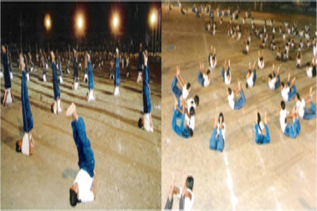
Yogic postures are practiced intensively in India for maintaining one’s health & fitness. Yoga is useful in developing flexibility, strength & toning up of muscles. Yoga is a life style in India. An invaluable gift of ancient Indian tradition, Yoga has emerged as one of the most trusted means to boost physical and mental well-being. The word "Yoga" is derived from the Sanskrit root yuj meaning "to join", "to yoke" or "to unite", symbolizing the unity of mind and body; thought and action; restraint and fulfillment; harmony between human and nature, and a holistic approach to health and well-being. HVPM conducts World Yoga Day regularly for not only its students but also for all localities. Near about 3 to 4 thousand people take the benefit of the World Yoga Day organized by the Mandal.
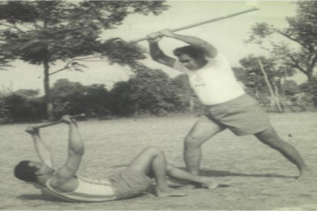
Lathi is one of the ancient weapon of India. The word LATHI means BAMBOO STICK. Lathi was used for Attack and Defence purpose. There can be a group or dual attack. Even single person can show the attacking skill using lathi. All the self- defence techniques were originated from LATHI. Lathi training aims at the ultimate co-ordination of Mind and Body.
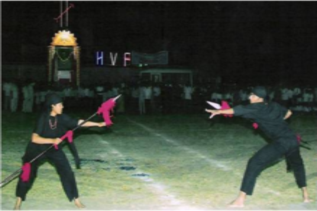
Bhala is Traditional hunting and self defense weapon used since ancient times in India. Benefits of Javelin sports are Improved cardiovascular health, Increased muscle strength and power, Improved flexibility and coordination, Better mental health, Increased bone density, Improved balance and stability.

Thang-Ta has emerged as very popular martial art game in India and attained recognition in the realm of national and international. It was originated from Manipur a tiny state in north east India, which deals with the defense and offence with weapon and without weapon. In Manipuri term, "Thang" means "Sword" & "Ta" means "Spear". So the name Thang-Ta means arts of Sword & Spear. It has different old names "Huyen Langlon" or "Huyen Lallong" etc. In Manipuri "HUYEN" means "WAR" while the second "LANGLON" means "NET" or art or knowledge. Huyen Langlon, therefore means knowledge of War Art, - whether physical, mental and spiritual. It is intended to imply defense and offence with or without weapons in an encounter and that relies not upon the triumphs of physical strength, but upon the true knowledge of the art.
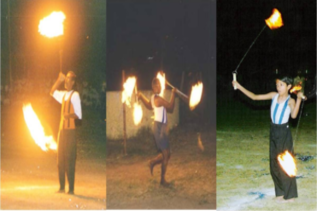
It is simple apparatus made of cane shaft with wooden ball at each end. By holding it at its balancing point the apparatus is to be swing fast round the body in sagital as well as frontal plane. Changing of apparatus from one to other hand requires considerable skill. With foot work Baneti can be swung while body is moving. It requires precision, quick foot work, finger dexterity & wrist work with macro muscular co-ordination. It looks attractive by blazing its two ends with fire.
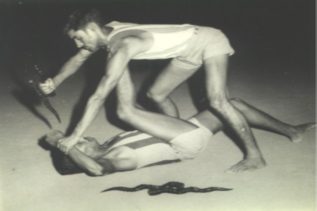
Madu is an ancient weapon used for hunting. It is made of the thorns of dear. It has a grip in middle to hold the weapon and one thorn pointing to right side while other thorn pointing to left side. So while hunting, the hunter can attack in both direction.
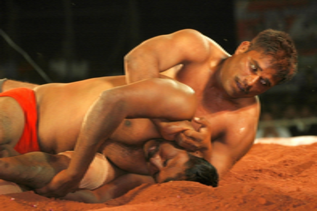
Kushti is Traditional Indian Wrestling style in red soil pit. Regular practice of this popular sport can help to promote muscular strength, agility, balance, and flexibility. This type of exercise helps to strengthen muscles in specific and special ways as it also involves an intense cardio workout.
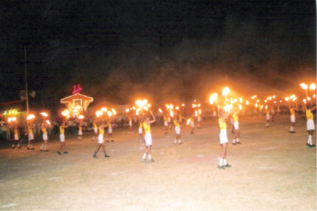
It is also called as "Karela" or "Indian club". It is made up of wooden. Karela is a group exercises. It is performed by blazing it with fire or without fire. The fire ball at its end looks spectacular while performing in a group. This requires considerable skill. It requires precision, quick foot work, finger dexterity & wrist work with micro and macro muscular co-ordination. It looks attractive when swayed by blazing its two ends with fire.
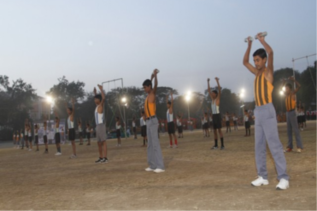
Dumbbell drill can improve physical performance, mind and body co-ordination, movement control, walking speed, functional independence and cognitive abilities.
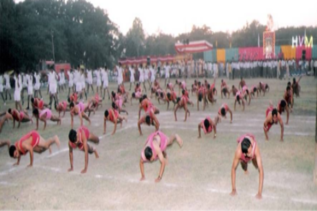
Wrestling is an ancient sports activity practiced in India. Dands and bethaks exercises are beneficial for Wrestler. They are two different exercises, but together they constitute the core wrestling exercise regimen. Dands are jackknifing push-ups and bethaks are comparable to Western-style deep knee bends. Although dands and bethaks are done separately, they are usually referred to as a pair. As a set they provide a complete body workout. The most important feature of dands and bethaks is that they be done rhythmically and at a steady pace. Thus, dands and bethaks transport the wrestler into an altered state of consciousness from which he derives psychic and spiritual purification. Dands are similar to certain aspects of surya namaskar. The various beneficial exercises for a wrestler can be performed in a form of a drill.
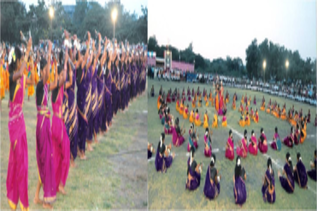
Lezim is an Indian traditional folk group dance originated in state of Maharashtra. It is regularly perform in festive events like Ganesh festival, Durga Utsav. It is performed in group in several artistic formations. This dance is named after a small musical instrument called Lezim, made up of wooden idiophone to which thin metal discs are fitted which produce a jingling sound and the dancers use this while dancing. The dance is frequently used as a fitness drill by schools and other institutions because it involves many callisthenic moves and can be quite strenuous. It gives all-round exercise to body develop high sense of rhythm & aesthetic sense of body movements.


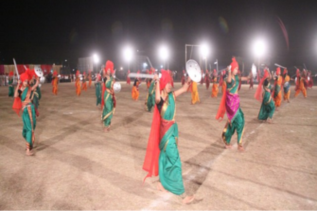
Dhal Talwar (Shield & Sword) was used as a weapon from ancient times ‘Dhal’ (Shield) is used for protecting oneself from the attack made by the other fighter with a Talwar (Sword). The attack and defense mechanism can be demonstrated in a form of drill.

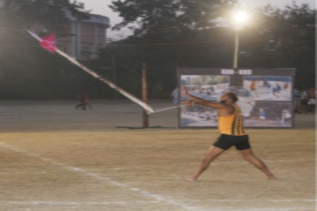
Vita is an ancient Traditional India weapon used for hunting purpose. Vita is smaller than Javeline (Bhala). It has sharp plate at its front side & a rope is attached on its grip. Using the rope the Vita can be throne in front for hunting & can be pulled back towards oneself. It is an excellent way of individual exercise. It requires qualities like agility, quick reaction, softness & body control.
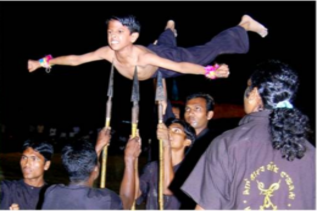
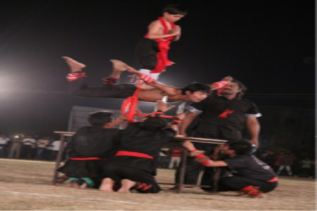
This Marshal arts skill is performed on the edges of Javelin (Bhala) using breath control.
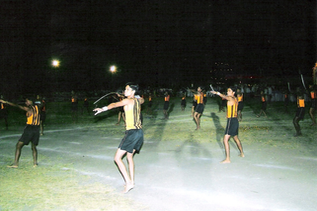
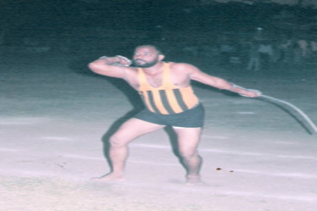
Danpatta is again an ancient weapon but is bigger in length. Its plate/blade is thin than a sword ranging in length from 10 to 44 inches (25 to 112 cm). Shield is not used along with the Danpatta. The grip of Danpatta is bigger as compared to sword. Danpatta activity can be performed with both hands. Maratha Warriors used Dandapatta regularly. Infact they were expert in use of that. Famous warrior Bajiprabhu Deshpande of King Shivaji Maharaj used Dandapatta in both hands in battle of Pavankhind to fight with entire army. Shivaji Maharaj himself was expert in using this weapon.

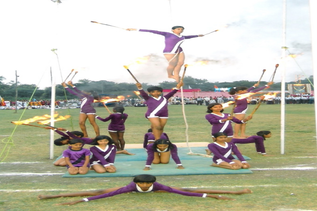
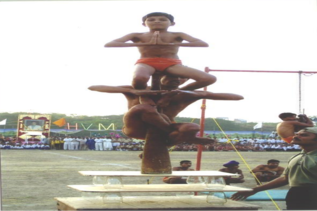
In today’s modern time Malakhamb is considered as a form of Gymnastic. Malakhamb can be performed using a fix or hanging wooden pole, rope & cane. It can also be performed on glasses kept in between the wooden base using pole. Several poses of yoga are performed on Mallakhamb. It requires strength ability, balance coordination & courage. Players show their art / skill using various props, sword, torch, etc.